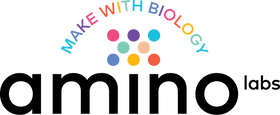About Teacher Tester Kit™
The Teacher Tester Kit Pack is your all-in-one practice pack created for science, STEM/STEAM, and visual arts educators who want an easy and enjoyable way to learn how to introduce engaging, hands-on biology activities in their classrooms. Whether you're brand new to biotechnology or already have some experience, this kit pack makes learning simple and stress-free, giving you the confidence and excitement to bring these real-world experiments to your students.
This kit even includes all the necessary equipment for you to practice with! The DNA Playground Large will allow you to practice the experiments at home or in your class and can be used with your students later. It can be conveniently stored on a shelf or in a cabinet, freeing up space for other class activities.
Amplify your teaching impact by pairing your Teacher Tester Kit Pack with our personalized Teacher Training & Professional Development sessions. With these sessions, you will gain dedicated support and maximize your confidence as you seamlessly integrate biotechnology lessons into your curriculum.
As biotechnology rapidly grows, interdisciplinary collaboration among subjects like visual arts, engineering, and biology opens innovative educational opportunities. Empower your students today to explore career possibilities in biotech fields ranging from science and engineering to design, law, and policy. Equip them with the in-demand skills to effectively communicate complex scientific ideas, create compelling content, and drive innovative developments in a thriving, global industry.
Don't wait—transform your classroom experience today!
What will you learn?
Introduction: Take the Genetic Engineers’ Pledge
Chapter 1 - Isolating DNA, the Blueprints of Life:
- extract and see real genomic DNA from strawberries using the DNA extraction kit,
- assemble a DNA structure utilizing a drag and drop simulator,
- discover 'What is DNA?', 'What is DNA's function?', and 'What is DNA made of?',
- learn about the history of DNA, its evolution, the road to precisely editing DNA and its future,
- understand how DNA can be used in biotechnology to create products,
- understand how atoms, molecules, macromolecules (nucleic acid), and nucleotides come into play.
Chapter 2 - Safety & setting up your Genetic Engineering Hero Space
- learn about the 4 Biosafety levels & how to stay safe & responsible during your biotechnology science projects,
- discover the rules & regulations in biotechnology,
- set up your own lab - What type of laboratory equipment is necessary? What kind of locations can be used for a safe & responsible biotechnology lab,
- learn how to inactivate your biotechnology science experiments and clean up your laboratory,
- download a laboratory safety checklist, a biosafety poster, and a biosecurity poster,
- understand the ethics, lab safety & best practices surrounding genetic engineering and biotechnology.
Chapter 3 - Growing E. coli cells
- grow colorful, friendly lab-strain of bacteria and use it to make bioart in a virtual simulator and then in real-life using the Canvas kit (optional hands-on),
- learn the difference between safe laboratory E. coli vs. ‘bad’ E. coli and its history,
- learn 'What is a cell?'
- tour the cell structure using the Cells as (micro) factories analogy - a comparison between factories and cells.
- discover the role of macromolecules: carbs, lipids, proteins
Chapter 4 - Genetic Engineering your E. coli cells
- engineer bacteria (cells) with a pre-made DNA program in a virtual simulator and then in real-life using the Engineer-it kit (optional hands-on),
- learn the primary operating environment of a cell,
- start understanding how cells read DNA: How do cells know how to start, do and stop reading DNA (transcription),
- discover 'What is a gene?'
- find out what DNA plasmids are and how to use them in biotechnology.
During this STEM biotechnology journey, you will learn how to use bacteria and DNA to make with biology. Once you are done, you will have completed the first part of the Zero to Genetic Engineering Hero's journey; genetically engineering bacteria with DNA plasmids! From there, you can continue your Genetic Engineering Hero journey with Chapters 5, 6, and 7 to learn about advanced biotechnology concepts and skills like enzymes, genetic switches, DNA plasmid maps, and more!
View the full learning journey here.
What's included?
What else is needed?
Cleaning and safety supplies are not included in the kit. Necessary safety and cleaning supplies are latex or nitrile gloves, and a chlorinated bleach cleaner or a 10% solution of chlorinated bleach in a spray bottle (you can make this by adding 9 parts water to 1 part bleach in a spray bottle). You can add a Mini Safety Set to your kit which includes gloves and a reusable plastic apron to protect your clothes.
For more information about safety, set up and clean up, you can have a look at the instruction manual for the experiment linked in the Ressources section below, and at the "Practicing safe science" page.
Storage & Shipping
Shipping Times
Experiment kits are shipped 1-10 working days after you place your order. If you require yours for a specific date or event, please contact us before or with your order # so that we can try to make it happen for you! ☺︎
Storage
For any questions, don't hesistate to reach out to us - contact us




























